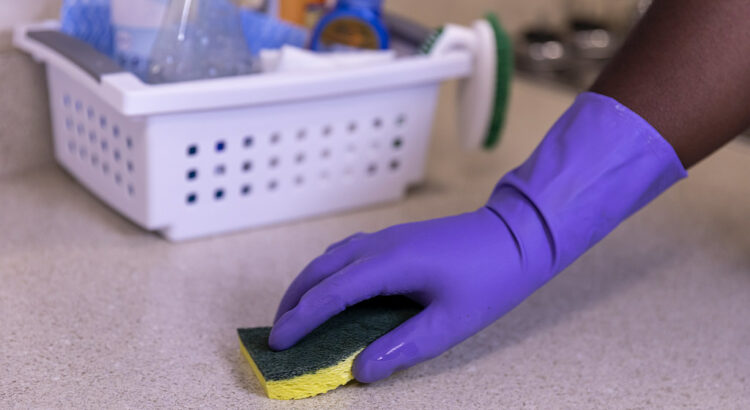Tired of harsh chemical cleaners that leave your kitchen smelling like a science lab? It’s time to switch to natural cleaning solutions that not only get the job done but also leave your kitchen smelling fresh and clean. From tackling grease and grime to banishing stubborn stains, there are plenty of eco-friendly alternatives hiding in your pantry. Say goodbye to the overpowering scent of chemical cleaners and hello to a kitchen that sparkles and shines with the power of nature. Let’s dive into the world of natural cleaning solutions for the kitchen and discover the magic of ingredients that have been around for centuries.
Table of Contents
- Unleash the Power of Baking Soda for Sparkling Countertops
- Vinegar: Your Go-To Grease Cutter and Disinfectant
- Freshen Up Your Kitchen Sink with Citrus Enzyme Cleaners
- Say Goodbye to Stains With Salt Scrubs
- Harnessing Tea Tree Oil for Antimicrobial Cleaning
- The Magic of Castile Soap in Dishwashing
- Cooking Up a Clean Microwave with Lemon Steam
- Polishing Stainless Steel Appliances with Olive Oil
- Revitalize Your Cutting Boards with Hydrogen Peroxide
- Embrace the Natural Abrasiveness of Coffee Grounds
- Questions & Answers for Natural Cleaning Solutions for the Kitchen
- Key Takeaways
Unleash the Power of Baking Soda for Sparkling Countertops
When it comes to keeping your kitchen countertops sparkling clean, natural kitchen cleaners are the way to go. Not only are they eco-friendly, but they are also safe to use around food preparation areas. Baking soda, in particular, is a powerhouse when it comes to cleaning and deodorizing kitchen surfaces.
Here’s how you can use baking soda to achieve sparkling countertops in your eco-friendly kitchen:
Step 1: Create the Cleaning Solution
Start by mixing 3 parts baking soda with 1 part water to form a paste. This paste will serve as a gentle and effective cleaner for your countertops. The mild abrasive nature of baking soda helps to lift and remove dirt and grime without scratching the surface.
Step 2: Apply the Paste
Using a soft cloth or sponge, apply the baking soda paste to your countertops. Make sure to spread it evenly and work it into any stubborn stains or spills. Allow the paste to sit for a few minutes to loosen dirt and grease.
Step 3: Scrub and Rinse
Gently scrub the countertop surface with the paste using circular motions, focusing on any areas that need extra attention. Once you’ve thoroughly scrubbed the countertops, rinse the area with warm water and wipe it dry with a clean cloth. Your countertops should now be sparkling clean and free from residue.
By harnessing the power of baking soda, you can achieve a deep clean for your kitchen countertops while staying true to your eco-friendly values. Not only is baking soda an affordable and readily available natural kitchen cleaner, but it also eliminates the need for harsh chemicals that can be harmful to both the environment and your health. Give this natural cleaning solution a try and see the difference it can make in your kitchen!
Vinegar: Your Go-To Grease Cutter and Disinfectant
When it comes to natural kitchen cleaners, vinegar is a powerhouse. Not only does it cut through grease like a pro, but it also has disinfectant properties that make it ideal for maintaining an eco-friendly kitchen. Here’s how you can use vinegar to deep clean your kitchen:
Cleaning Countertops: Mix equal parts of water and vinegar in a spray bottle, and use it to wipe down countertops. The acidity of the vinegar will cut through grease and grime, leaving your countertops sparkling clean.
Disinfecting Cutting Boards: After using your cutting boards, spray them with undiluted vinegar and let it sit for a few minutes before rinsing. This will kill any bacteria lingering on the surface, making your cutting boards safe for use.
| Pros | Cons |
|---|---|
| Effective grease cutter and disinfectant | Strong smell that some may not like |
| Environmentally friendly | Not suitable for all surfaces (avoid using on natural stone countertops) |
Removing Microwave Odors: Fill a microwave-safe bowl with 1/2 cup of vinegar and 1/2 cup of water. Microwave it on high for 2-3 minutes, then let it sit for 5 minutes. The steam will loosen any food splatters, and the vinegar will help neutralize any lingering odors.
By using vinegar as your go-to grease cutter and disinfectant, you can keep your kitchen sparkling clean while also minimizing your environmental footprint. It’s an affordable, versatile, and eco-friendly option that’s worth adding to your cleaning arsenal.
Freshen Up Your Kitchen Sink with Citrus Enzyme Cleaners
Tired of harsh chemical cleaners that leave your kitchen smelling like a science lab? It’s time to freshen things up with natural cleaning solutions for the kitchen. Citrus enzyme cleaners are a game-changer when it comes to eco-friendly kitchen deep cleaning. Not only do they eliminate tough stains and odors, but they also leave behind a refreshing citrus scent.
Here’s how to make your own citrus enzyme cleaner to freshen up your kitchen sink.
How to Make Citrus Enzyme Cleaner
Ingredients:
- 2-3 citrus fruits (lemons, oranges, or limes)
- 1 cup brown sugar
- 1-liter water
- A large glass container
- Cut the citrus fruits into small pieces and place them in the glass container.
- Add the brown sugar and water to the container.
- Cover the container with a breathable cloth and secure it with a rubber band.
- Store the container in a warm, dark place for 3 months, shaking it occasionally.
How to Use Citrus Enzyme Cleaner
Once your citrus enzyme cleaner is ready, it’s time to put it to work. Simply dilute the cleaner with water and use it to scrub and freshen up your kitchen sink. Not only will it remove grease and grime, but it will also leave behind a natural citrus fragrance, giving your kitchen a refreshing, clean feel. Say goodbye to chemical-laden cleaners and hello to a fresh, eco-friendly kitchen.
Natural kitchen cleaners like citrus enzyme cleaner are a great way to freshen up your kitchen sink without exposing your family to harmful chemicals. Plus, they are incredibly easy to make at home using simple ingredients. So, next time you’re looking to deep clean your kitchen, give citrus enzyme cleaner a try and experience the power of natural cleaning solutions.
Say Goodbye to Stains With Salt Scrubs
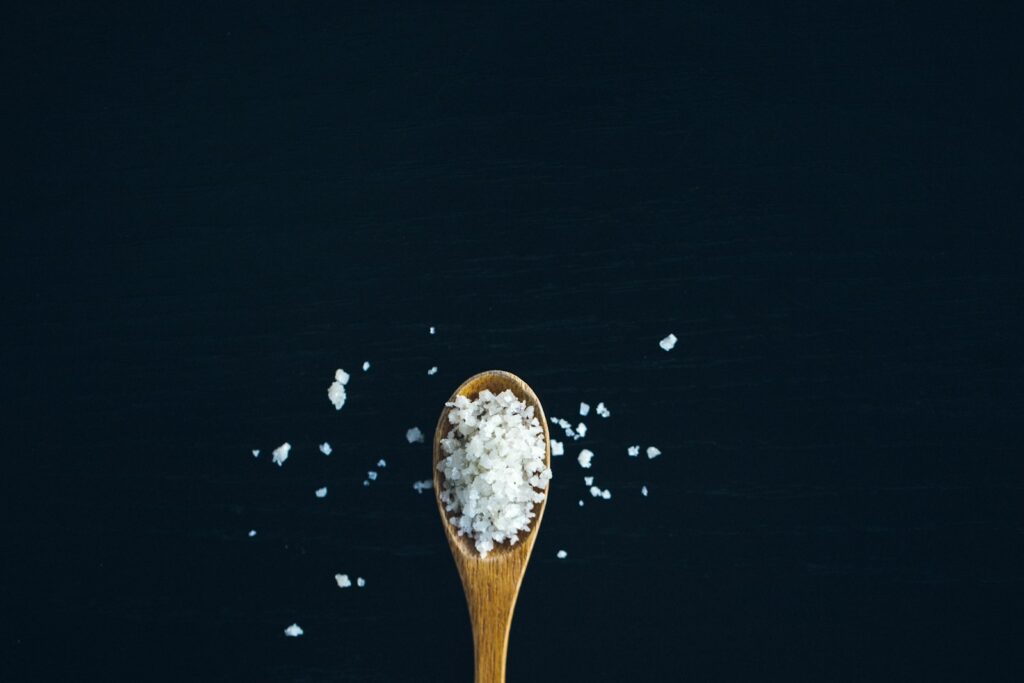
Salt scrubs are a natural and eco-friendly way to say goodbye to tough stains in your kitchen. By using a combination of coarse salt and natural cleaners, you can easily and effectively remove stubborn grease, grime, and food residue from countertops, stovetops, and sinks.
One of the key benefits of using salt scrubs as natural kitchen cleaners is that they are gentle yet effective, making them perfect for deep cleaning without the use of harsh chemicals. Additionally, salt is a natural antimicrobial agent, which means it can help to keep your kitchen surfaces clean and free from harmful bacteria.
To make your own salt scrub, simply mix coarse salt with a natural cleaning agent such as lemon juice or white vinegar to create a paste. Apply the scrub to the stained area and let it sit for a few minutes before scrubbing with a sponge or brush. Rinse with water and you’ll be amazed at how easily the stains disappear.
When using salt scrubs as natural kitchen cleaners, it’s important to note that they may not be suitable for all surfaces, especially delicate materials such as marble or granite. Always test the scrub on a small, inconspicuous area before using it on the entire surface, and be sure to follow the manufacturer’s guidelines for care and maintenance of your countertops and appliances.
Harnessing Tea Tree Oil for Antimicrobial Cleaning
Tea tree oil is a powerful natural kitchen cleaner that can be used to sanitize surfaces and tackle tough messes. Its antimicrobial properties make it an excellent choice for eco-friendly kitchen deep cleaning, providing a safe and effective alternative to harsh chemical cleaners.
How to Use Tea Tree Oil for Cleaning:
To harness the antimicrobial power of tea tree oil for kitchen cleaning, simply follow these steps:
- Fill a spray bottle with water and add 5-10 drops of tea tree oil
- Shake the bottle to mix the solution
- Spray the mixture onto countertops, cutting boards, and other surfaces
- Wipe down with a clean cloth
Using tea tree oil in this way not only cleans but also sanitizes, making it an ideal natural kitchen cleaner for everyday use.
Pros of Tea Tree Oil as a Kitchen Cleaner:
- Eco-friendly and non-toxic
- Effective against bacteria, viruses, and fungi
- Pleasant, natural scent
Cons of Tea Tree Oil as a Kitchen Cleaner:
- Can be toxic if ingested, so it should be kept out of reach of children and pets
- Some people may be sensitive to the scent
Tea tree oil is a versatile and powerful natural kitchen cleaning solution that can be used to disinfect surfaces, eliminate odors, and promote a healthier, eco-friendly kitchen environment. Incorporating tea tree oil into your cleaning routine can help you maintain a naturally clean and healthy home.
The Magic of Castile Soap in Dishwashing
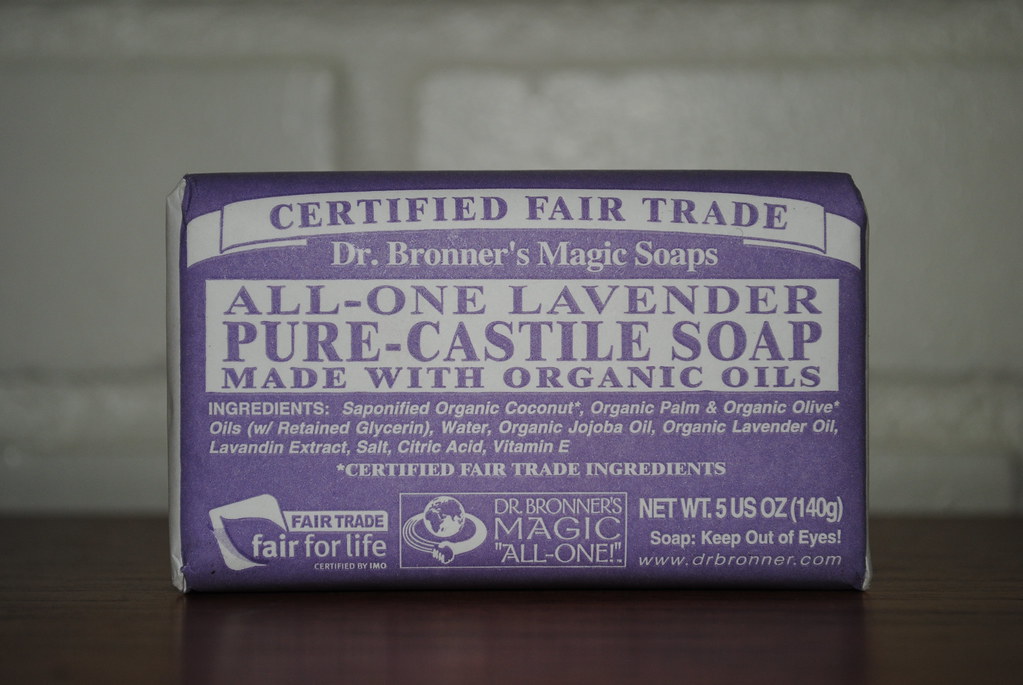
When it comes to natural kitchen cleaners, Castile soap is a powerhouse. Made from plant-based oils, this eco-friendly kitchen essential is perfect for deep cleaning dishes without any harsh chemicals. The magic of Castile soap lies in its versatility and effectiveness.
Here’s how you can use it for sparkling clean dishes:
Step 1: Dilute the Castile Soap
Start by diluting the Castile soap with water. For a standard dishwashing solution, mix 1 tablespoon of Castile soap with 1 gallon of warm water. This will create a gentle yet effective cleaning solution that is safe for your dishes and the environment.
Step 2: Soak and Scrub
Soak your dishes in the diluted Castile soap solution for a few minutes to loosen any stuck-on food particles. Then, use a soft sponge or brush to scrub away any remaining residue. The gentle yet powerful nature of Castile soap will leave your dishes spotless without the need for harsh abrasives.
Step 3: Rinse Thoroughly
After scrubbing, rinse your dishes with clean water to remove any soap residue. Castile soap is biodegradable, so you can rest assured that it won’t harm the environment when it goes down the drain.
Step 4: Enjoy the Benefits
Not only does Castile soap leave your dishes clean and residue-free, but it also won’t leave behind any toxic chemicals that could be harmful to your health. Plus, it’s a budget-friendly option that can save you money in the long run.
Castile soap natural cleaning power, eco-friendly properties, and budget-friendly nature make it an invaluable addition to any kitchen. Say goodbye to harsh chemicals and hello to sparkling clean dishes with the magic of Castile soap.
Cooking Up a Clean Microwave with Lemon Steam
Cleaning the microwave doesn’t have to involve harsh chemicals or abrasive scrubbing. You can easily achieve a sparkling clean microwave using eco-friendly kitchen cleaners like lemon and water. Not only is this method effective, but it also leaves your microwave smelling fresh and citrusy.
Step 1: Begin by filling a microwave-safe bowl with water, and then add in the juice of one lemon. If you don’t have a lemon on hand, you can also use a few tablespoons of vinegar as a substitute. The acidic properties of the lemon or vinegar help to break down stubborn food stains and eliminate odors.
Step 2: Place the bowl in the microwave and heat it on high for 3-5 minutes, until the water is steaming. The steam created by the water and lemon will loosen any dried-on food and grease, making it easier to wipe clean.
Step 3: Once the microwave has finished steaming, keep the door closed for a few minutes to allow the steam to continue working its magic. This step also helps to soften any remaining residue, making it easier to remove.
Step 4: Carefully remove the bowl from the microwave and use a clean, damp cloth to wipe down the interior. The steam will have loosened the dirt, so it should wipe away easily. For stubborn spots, use a non-abrasive sponge to gently scrub them away.
By using this natural cleaning solution, you can achieve a sparkling clean microwave without exposing yourself or your family to harmful chemicals. This method is not only effective and eco-friendly, but it also leaves your kitchen smelling fresh and inviting. Incorporate this simple cleaning routine into your kitchen deep cleaning regimen for a naturally clean and healthy cooking environment.
Polishing Stainless Steel Appliances with Olive Oil
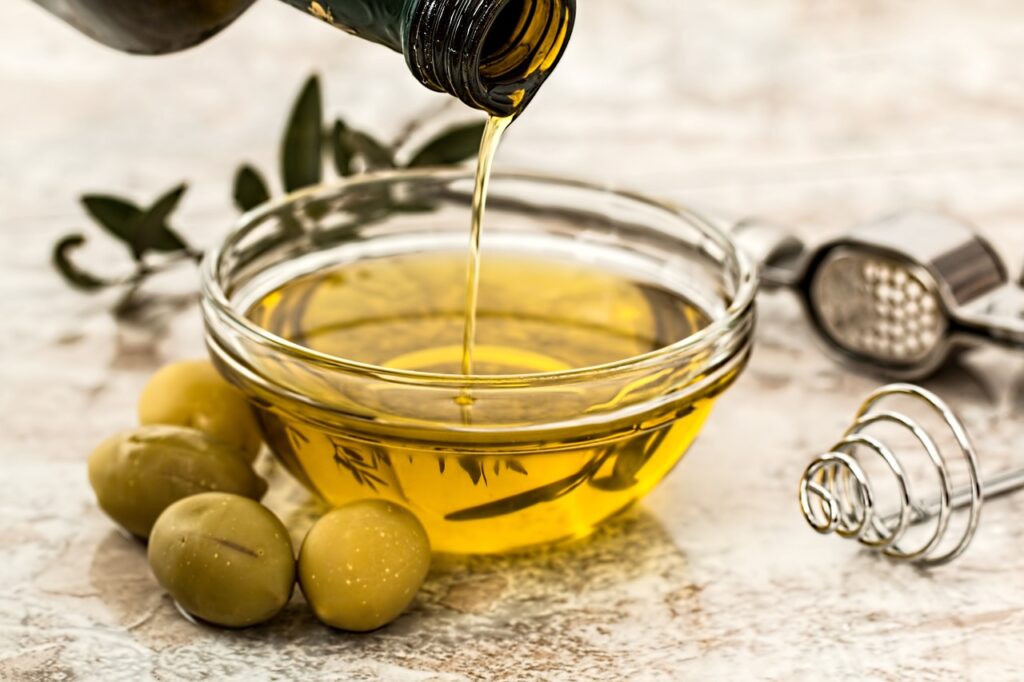
Stainless steel appliances are a sleek and modern addition to any kitchen, but they can quickly become tarnished and lose their luster. Instead of reaching for chemical-laden stainless steel cleaners, consider using a natural alternative like olive oil. Not only is olive oil eco-friendly, but it also leaves a streak-free, polished finish on your appliances.
To polish your stainless steel appliances with olive oil, follow these simple steps:
- Start by cleaning the surface of the appliance with a natural kitchen cleaner to remove any dirt or grime.
- Next, apply a small amount of olive oil to a soft, microfiber cloth.
- Gently buff the stainless steel surface in circular motions, working with the grain of the metal.
- Continue buffing until the surface is shiny and free of any streaks.
Using olive oil to polish your stainless steel appliances not only gives them a beautiful shine, but it also provides a protective barrier against fingerprints and smudges. Plus, it’s a cost-effective and natural alternative to store-bought stainless steel cleaners. However, it’s important to note that too much oil can leave your appliances looking greasy, so be sure to use a minimal amount and buff thoroughly for the best results.
So, the next time your stainless steel appliances are in need of a deep clean, consider reaching for a bottle of olive oil instead of reaching for harsh chemicals. Your kitchen will thank you, and you’ll be doing your part to keep your home clean and eco-friendly.
Revitalize Your Cutting Boards with Hydrogen Peroxide
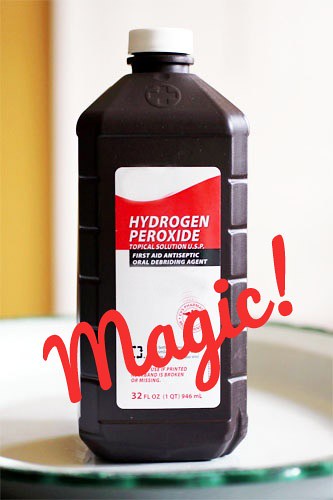
Tired of your cutting boards looking worn and smelling funky? It’s time to revitalize them with hydrogen peroxide, a natural kitchen cleaner that is both eco-friendly and effective.
Here’s how you can do it:
Step 1: Gather Your Supplies
Before you begin, make sure you have the following items on hand:
- Cutting boards in need of cleaning
- Hydrogen peroxide
- Baking soda
- Scrub brush or sponge
- Hot water
Step 2: Create a Cleaning Solution
Mix equal parts hydrogen peroxide and baking soda to form a paste. Apply the paste to the cutting boards and let it sit for 5-10 minutes to allow it to penetrate and lift dirt, stains, and odors.
Step 3: Scrub and Rinse
Using a scrub brush or sponge, scrub the cutting boards to lift off any remaining grime. Then, rinse the cutting boards with hot water to remove the cleaning solution and any loosened debris.
Step 4: Dry and Enjoy
Once the cutting boards are clean, dry them thoroughly with a clean towel. You’ll be amazed at how hydrogen peroxide has brought your cutting boards back to life, leaving them fresh and sanitized for your next meal prep!
Embrace the Natural Abrasiveness of Coffee Grounds
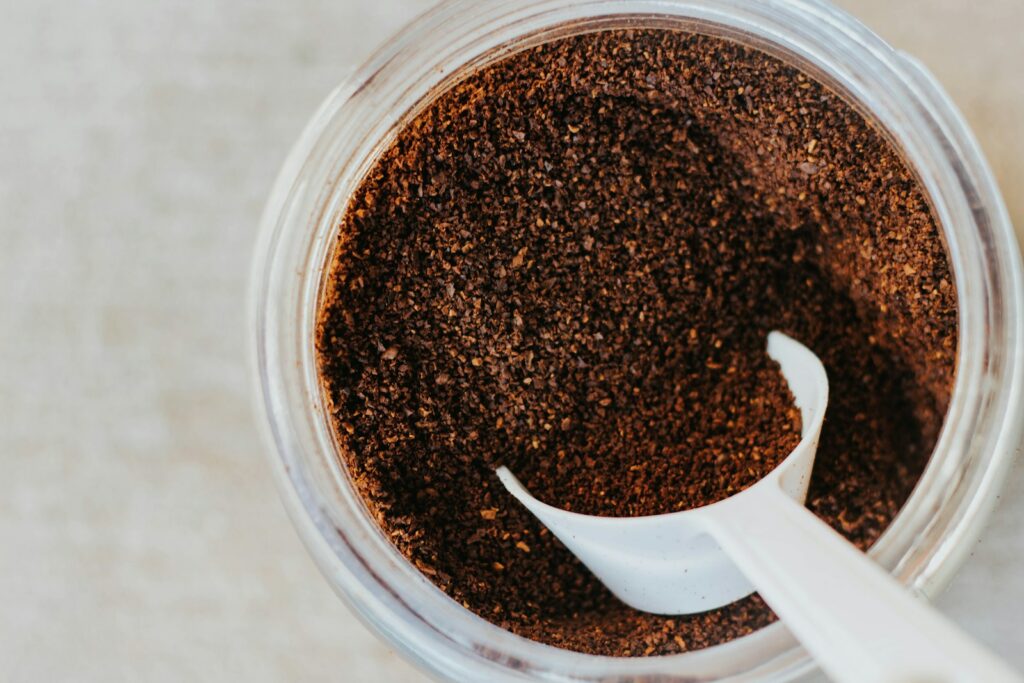
Coffee grounds are not just for your morning pick-me-up. They can also be incredibly useful as a natural cleaning solution for your kitchen. The natural abrasiveness of coffee grounds makes them perfect for scrubbing away tough stains and grime, making them an eco-friendly kitchen cleaner. Plus, the scent of coffee will leave your kitchen smelling fantastic!
Here are some ways you can for kitchen deep cleaning:
Scrubbing Pots and Pans: Sprinkle used coffee grounds onto a damp sponge and use it to scrub away stubborn food residue from your pots and pans. The abrasive texture of the grounds will help to loosen and remove stuck-on food without scratching the surface.
Deodorizing the Garbage Disposal: Toss a handful of coffee grounds down your garbage disposal and run it with cold water to eliminate any lingering odors. The grounds will help to absorb and neutralize unpleasant smells, leaving your kitchen smelling fresh and clean.
Cleaning Greasy Surfaces: Mix coffee grounds with a little bit of water to create a paste, then use it to scrub away grease and grime from your kitchen surfaces. The abrasiveness of the grounds will help to cut through the grease, while the natural oils in the coffee will leave the surfaces shiny and clean.
Polishing Cookware: For a quick and easy way to polish your stainless steel or copper cookware, use a handful of coffee grounds as a gentle abrasive scrub. This will help to remove any dullness or discoloration, leaving your cookware looking like new.
Overall, embracing the natural abrasiveness of coffee grounds is a fantastic way to keep your kitchen clean and eco-friendly. Plus, it’s a great way to give a second life to your used coffee grounds, reducing waste and saving money on expensive cleaning products. So next time you make a pot of coffee, don’t toss those grounds – put them to work in your kitchen!
Questions & Answers for Natural Cleaning Solutions for the Kitchen
What are some natural cleaning solutions I can use in my kitchen?
There are several natural cleaning solutions you can use in your kitchen, such as white vinegar, baking soda, lemon juice, and essential oils.
How can I use white vinegar to clean my kitchen?
You can use white vinegar to clean surfaces, disinfect cutting boards, remove odors from the fridge, and clean your coffee maker.
What can I do with baking soda in my kitchen?
Baking soda is great for scrubbing and cleaning tough stains on surfaces, deodorizing your fridge, and removing food residue from pots and pans.
Can I use lemon juice to clean my kitchen?
Yes, lemon juice is a natural degreaser and can be used to clean countertops, remove stains, and freshen up your garbage disposal.
How can I use essential oils for cleaning in the kitchen?
You can use essential oils like tea tree, lavender, and peppermint to create natural cleaning sprays, add a fresh scent to your cleaning solutions, and even repel insects.
Are natural cleaning solutions safe to use around food?
Yes, natural cleaning solutions are safe to use around food, as they do not contain harsh chemicals that can leave residue or fumes on surfaces.
Can I use natural cleaning solutions on all kitchen surfaces?
Most natural cleaning solutions can be used on a variety of kitchen surfaces, such as countertops, sinks, appliances, and floors.
How do I make a natural all-purpose kitchen cleaner?
You can make a natural all-purpose cleaner by mixing water, white vinegar, and a few drops of essential oils in a spray bottle.
Are natural cleaning solutions effective against tough kitchen stains?
Yes, natural cleaning solutions can be just as effective, if not more, against tough kitchen stains when used correctly.
Where can I find recipes for natural cleaning solutions for my kitchen?
You can find recipes for natural cleaning solutions for your kitchen online, in books about green cleaning, or by experimenting with different natural ingredients on your own.
Key Takeaways
So there you have it, folks! With these natural cleaning solutions, you can keep your kitchen sparkling clean while also being environmentally friendly. Say goodbye to harsh chemicals and hello to the power of simple, everyday ingredients. Whether it’s tackling greasy stovetops or banishing pesky odors, these natural remedies have got you covered. So why not give them a try and see the difference for yourself? Happy cleaning, and here’s to a healthier, happier kitchen!
